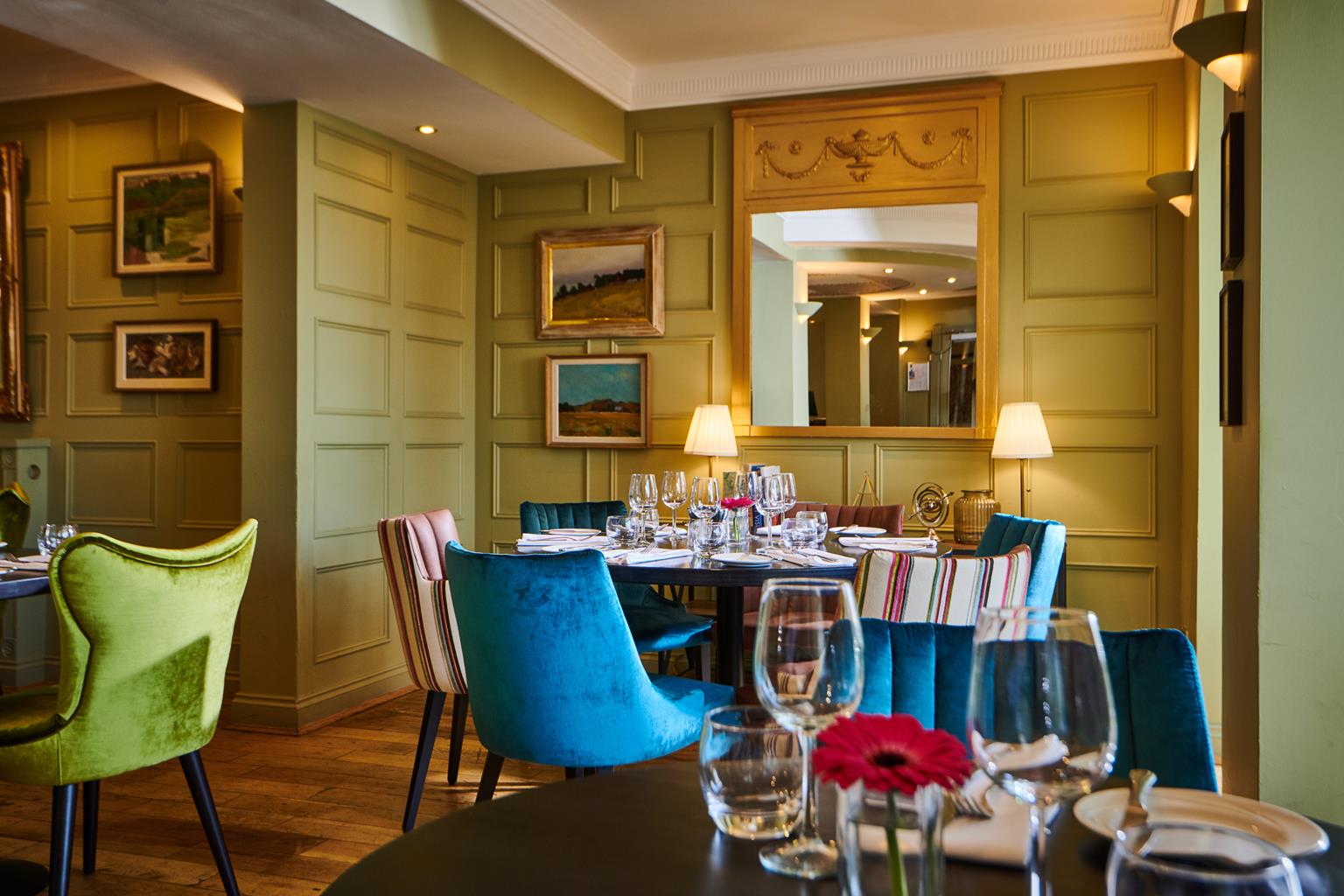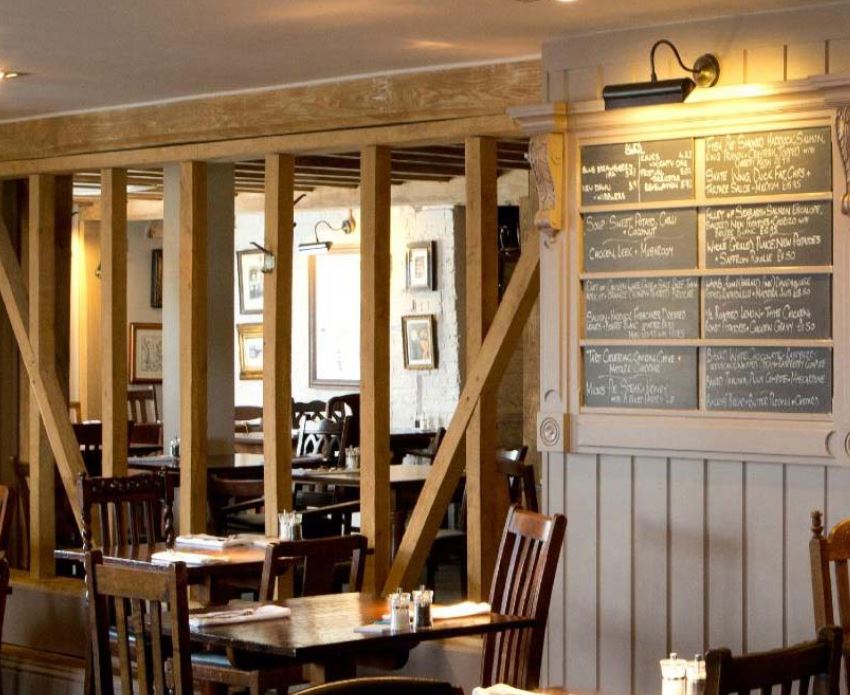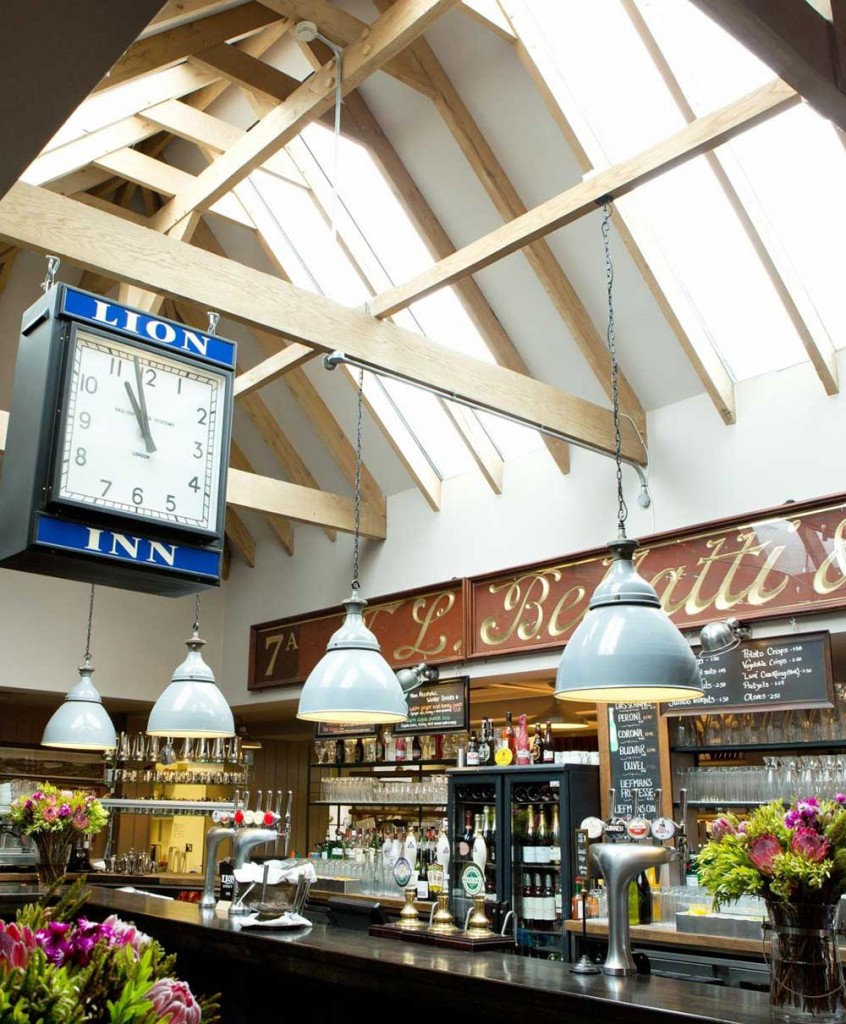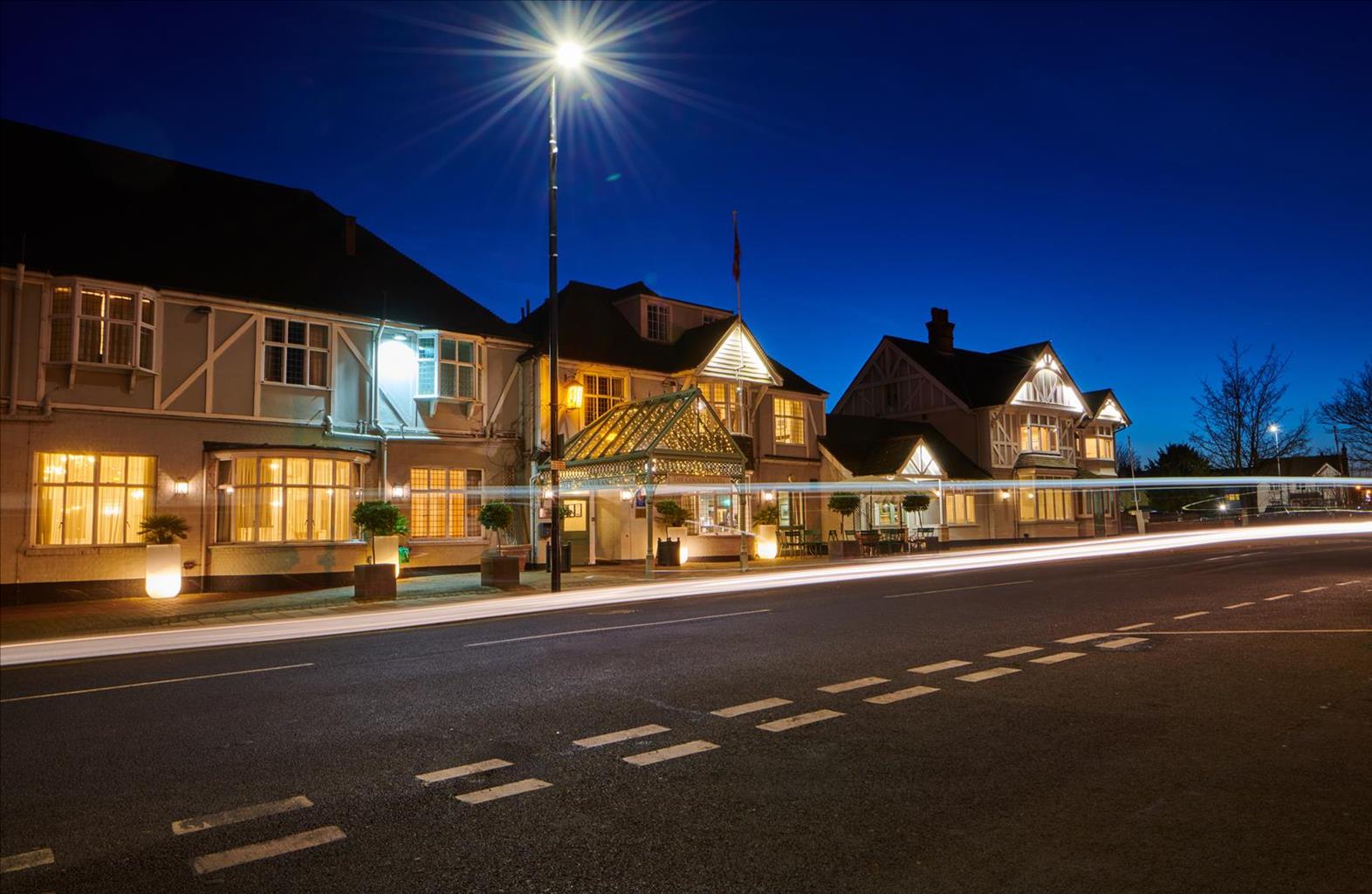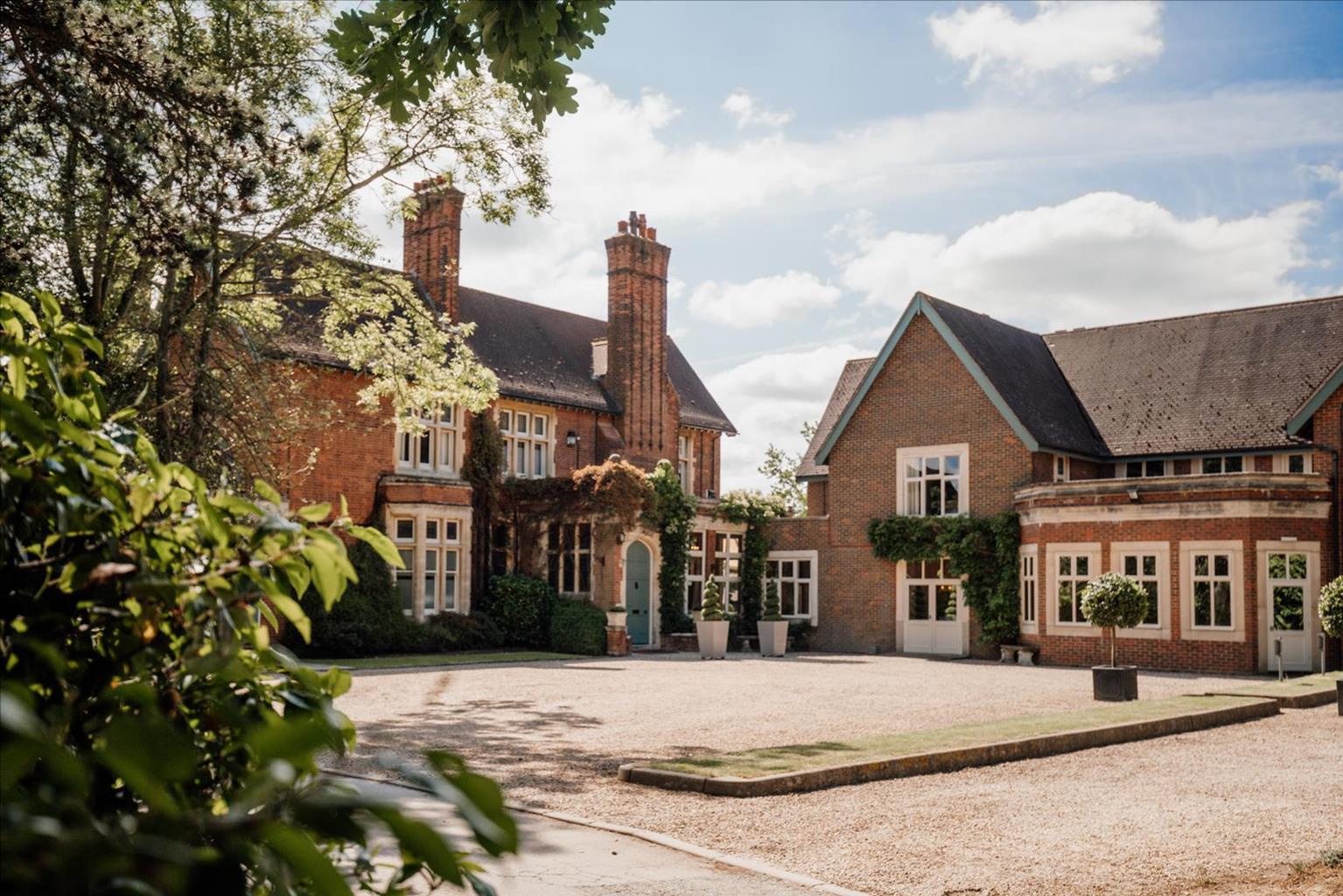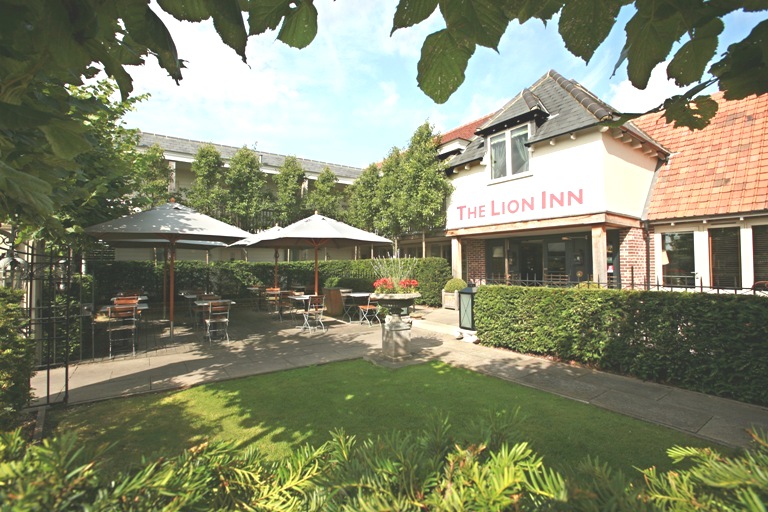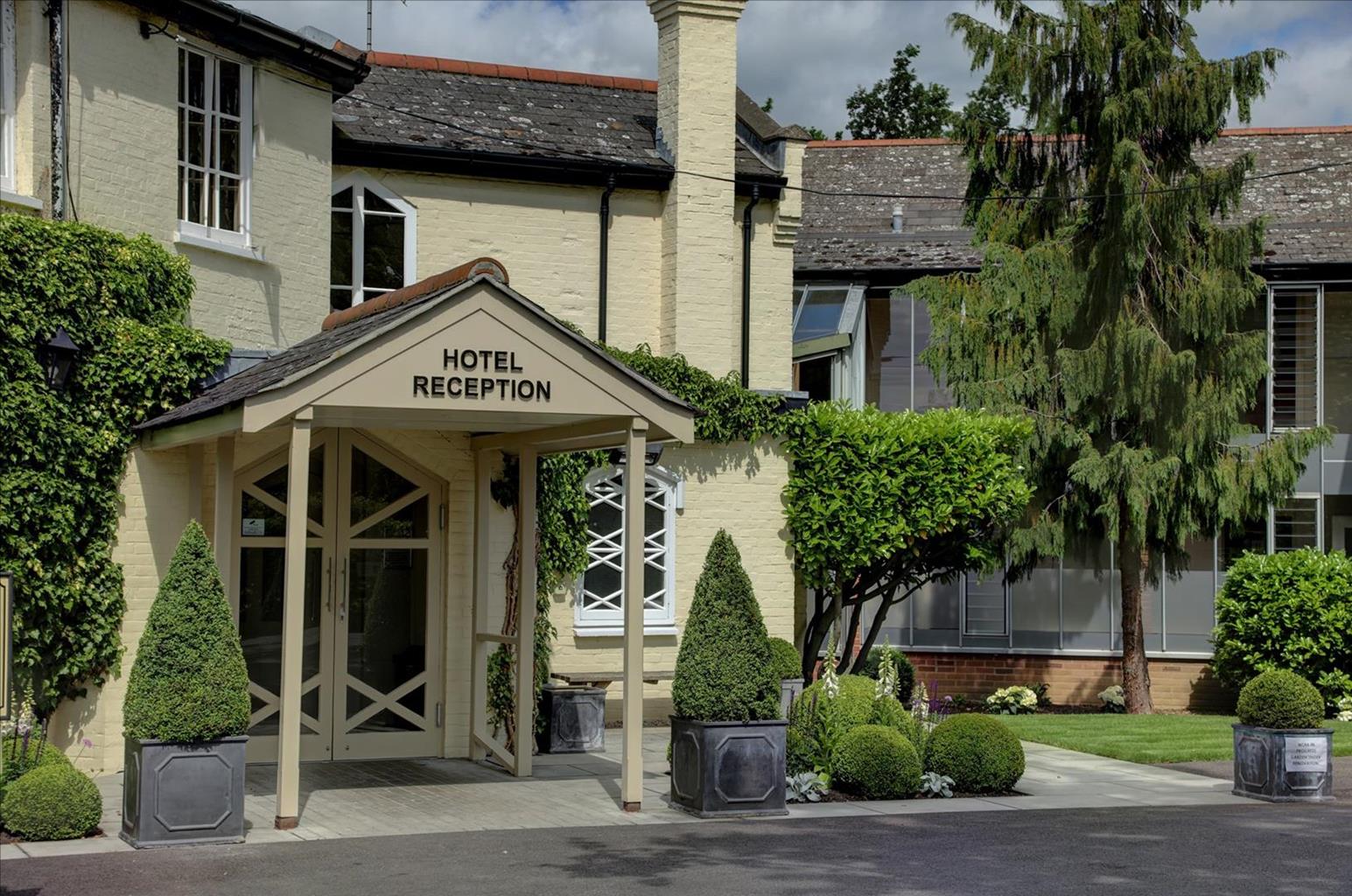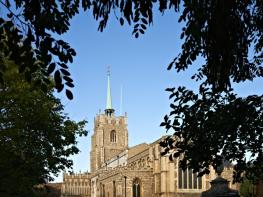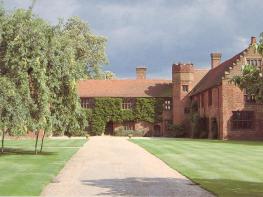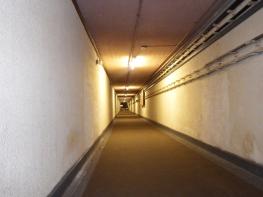Established in 1928 in the grounds of the Old Rainsford Manor, County Hotel is just three…
A Chelmsford city walk

An easy ramble highlighting some historic buildings.
3 miles (4.8kms)
About the walk
Once a small Roman military settlement on slightly raised ground near the junction of the River Can and the River Chelmer, Chelmsford was known as Caesaromagus or Caesar’s Plain, and was the only place-name in Roman Britain to have an imperial prefix. Its location halfway between Colchester and London helped it become a popular market town, and when it was granted a market charter in 1218, it became the county town of Essex.
The friars arrive
Around this time an influx of Dominican friars arrived in town. They became known as the ‘black monks’, as they wore black habits. In 1538, when Henry VIII ordered the dissolution of the monasteries, the priory was pulled down and the land sold. Records show that the number of friars ranged throughout the years from 7 to 36, and you can find out more about them from an information board beside the subway during the walk.
Before the new road was built, excavations in 1969 revealed that one end of the friary church was made of flint rubble and limestone. Further excavations in the 1970s revealed some interesting objects, including a stone coffin built into one of the walls, and a large number of oyster shells.
The birthplace of radio
Along the route you will pass the home of Essex Radio. Back in 1899 an Italian, Guglielmo Marconi, opened the world’s first wireless factory in Chelmsford. He called it The Marconi Wireless Telegraph and Signal Company, and since then the town has claimed to be the birthplace of radio. You can find out more about Marconi in the Chelmsford Museum in Oaklands Park, near the walking route. This is a museum with a difference for not only does it contain displays on local history and the development of the city from prehistoric times, but also the Essex Regiment Museum. Interactive displays on local history and archaeology and a live beehive add to the experience.
Today Chelmsford is home to the Essex County cricket team and Anglia Ruskin University, and is one of the fastest-growing towns in southeast England. In 2012 it was one of three towns granted city status to mark the Queen’s Diamond Jubilee.
Walk directions
From the car park in Bond Street head towards the town centre and join the High Street to reach Shire Hall, site of the assizes and quarter sessions where, 350 years ago, Nonconformists and witches were tried in open court beneath a timber-framed canopy. Today the 18th-century building is used as the Magistrates Court. Turn left at Shire Hall and take the first turning on the right to England's smallest cathedral. In the grounds, look for the triangular gravestone dedicated to three Marys: Mary Ann Woolmer, Mary Elizabeth Eve and Mary Smith, who perished in a fire that partially destroyed the town in 1808. Note the grim epitaph 'Prepare for death ere ye retire to rest, for ye know not what a day may bring forth'. Parts of the cathedral date back to 1420; on the southeast side is a figure of St Peter holding a Yale key. Walk clockwise around the cathedral, passing old sunken gravestones, and leave the grounds the same way you came in.
Cross Tindal Square, passing the statue of 19th-century judge, Lord Chief Justice Nicolas Tindal, who was born and bred in Chelmsford. Walk along Tindal Street passing Judge Tindal's Tavern on the left, to the traffic lights at New London Road. Here, turn right and cross the bridge over the River Can to Parkway. Just around the corner, on the wall beside the subway, an information panel describes the site of the 13th-century Dominican friary. Take the subway and follow signs for the C & E Hospital. As you emerge, the yellow-brick Infirmary and Dispensary is on your right. Continue past the hospital to where a pathway to the right leads to a statue of Graham Gooch, the former captain of Essex and England cricket teams. Just past the statue rejoin New London Road via the narrow path on the left, and look back to see the front of two Victorian villas, Thornwood and Bellefield. The first mayor of Chelmsford, Frederick Chancellor, lived at Bellefield. Walk on along New London Road for more examples of fine Victorian-style houses and attractive terraced cottages, many of which have been converted into offices. Further up on the left is the delightful Melford Villas, and immediately next door is the street's oldest business, Lucking & Sons, funeral directors, which is adjacent to the Nonconformists' cemetery. Keep ahead to the crossroads where you will see the building of Essex Radio on your right.
Turn left into Elm Road and then left again into Moulsham Street, the site of the old London Road and the former manor of Moulsham, given to Thomas Mildmay by Henry VIII for his role as receiver of monies during the Dissolution of the Monasteries. The street contains many listed buildings, including six almshouses founded by Thomas Mildmay, and rebuilt in 1758. Further along is St John the Evangelist Church, and shops and cottages where the upper storeys overhang. A particularly good example is No. 41, dating from the 15th century.
Where the street ends, cross Parkway via the subway or the pedestrian crossing and continue along Moulsham Street to reach the High Street. Just after Baddow Road, on the right, is the former Regent Playhouse theatre, now a cafe. At the junction to Springfield Road, the next turning on the right, is the site of the Black Boy Inn, immortalised by Charles Dickens in The Pickwick Papers. Back in the High Street, on the right is the Royal Bank of Scotland, the former Mansion House and lodgings of the judge when he sat at the assizes. Shire Hall is straight ahead, and from here you return to the car park.
Additional information
Pedestrianised streets and pavements
Historic streets and buildings
Pedestrianised areas provide traffic-free walking
OS Explorer 183 Chelmsford & The Rodings, Maldon & Witham
Several pay-and-display car parks in city centre
Duke Street
WALKING IN SAFETY
Read our tips to look after yourself and the environment when following this walk.
Find out more
Also in the area
About the area
Discover Essex
Essex is full of pleasant surprises. It has the largest coastline of any county in England, with its fair share of castles, royal connections and scenic valleys. Take Colchester, for example, which was built by the Romans and is Britain’s oldest recorded town. Its castle contains the country’s largest Norman keep and yet, a stone’s throw from here, East Anglia’s newest arts centre promises to put Colchester firmly on the map as Essex’s capital of culture.
Tidal estuaries are plentiful and their mudflats offer migrating birds a winter feeding place. Essex was known as the land of the East Saxons and for centuries people from all over Europe settled here, each wave leaving its own distinctive cultural and social mark on the landscape. Walking a little off the beaten track will lead you to the rural retreats of deepest Essex, while all over the county there are ancient monuments to explore:
- the great Waltham Abbey
- Greensted, thought to be the oldest wooden church in the world
- the delightful village of Pleshey has one of the finest examples of a former motte-and-bailey castle
- Hedingham Castle, magnificently preserved and dating from the 11th century.
Nearby stays
Restaurants and Pubs
Nearby experiences
Recommended things to do
Why choose Rated Trips?
Your trusted guide to rated places across the UK
The best coverage
Discover more than 15,000 professionally rated places to stay, eat and visit from across the UK and Ireland.
Quality assured
Choose a place to stay safe in the knowledge that it has been expertly assessed by trained assessors.
Plan your next trip
Search by location or the type of place you're visiting to find your next ideal holiday experience.
Travel inspiration
Read our articles, city guides and recommended things to do for inspiration. We're here to help you explore the UK.

